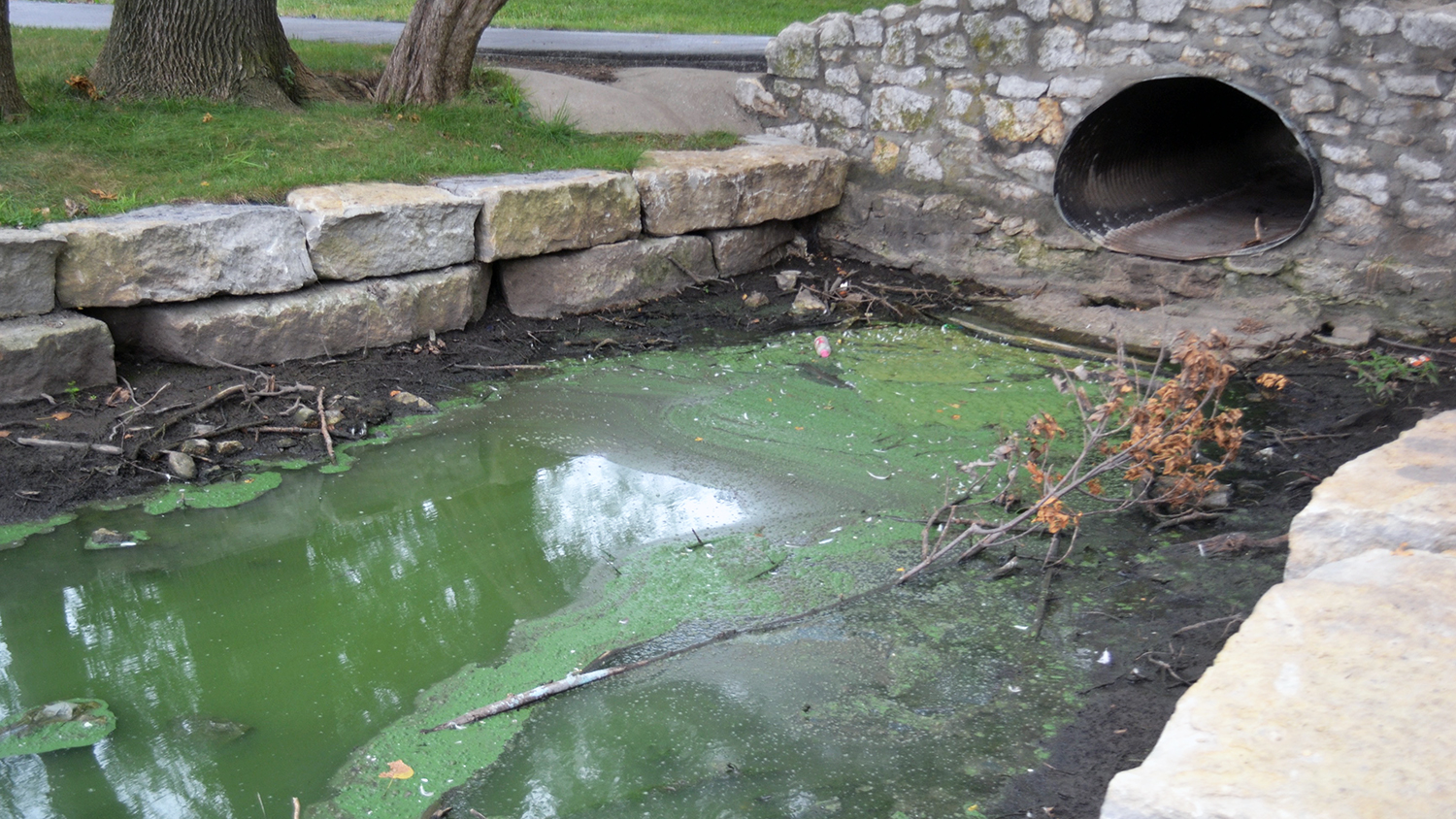
Have you noticed green stuff in South Lake? Getting rid of it isn’t as easy as scooping it out of the water. Toxic algal blooms are a chemical problem, and that means they need to be stopped at the source.
One big source of toxic algae in Overland Park: overfertilized lawns.
Fertilizer feeds your lawn nutrients it needs like phosphorus, potassium and nitrogen. But add too much of it, and excess can run off into streams and lakes. This causes nutrient pollution, creating conditions ripe for toxic algae to form.
The toxic algae we see in our city is “cyanobacteria,” also known as blue-green algae. You may recognize it for its texture, which looks like foam or scum. While blue-green algae is a natural phenomenon, it can become hazardous when nutrients are above what would naturally occur. At these levels, the algae produces toxins.
“It’s important to avoid blue-green algae, because it’s dangerous to the health of people and animals,” Ian Fannin-Hughes, the City’s water quality specialist, said. “The algae can make you sick, so do not drink or swim in the water, and keep a close eye on your pets so they don’t get near the water either.”
Toxic algal blooms are a recurring issue at South Lake and Wilderness Lake — one the Kansas Department of Health and Environment continually monitors. South Lake in particular has been under a “watch” advisory since 2020. You can check the department’s website for current lake advisories.
We share this information as well, so look out for signage in the parks and updates on social media when toxic algae is present in these lakes. Be aware that this type of algae is more present during the summer months when the sun is out, plants are growing and residents are actively working on their lawns.
In addition to overfertilized lawns, pet and yard waste are other common causes of harmful algal blooms in Overland Park. So please pick up after your pets, and don’t dump weeds, grass clippings or composted materials into creeks or storm drains — otherwise, it could run off into our lakes.
Fannin-Hughes routinely tests the water at South Lake and Wilderness Lake, determining whether the algae is toxic and reporting this information to the state. Watch him test South Lake’s water and explain the difference between natural and toxic algae in the video below.
The City is taking additional steps to curb nutrient pollution in South Lake as well. Staff have installed a floating wetland in the middle of the lake, which soaks up excess nutrients to combat the presence of toxic algae. Find out how the floating wetland works in the video below.
Still, the best way to improve the quality of the water long term is to keep excess nutrients like phosphorus out of lakes and streams in the first place. As we recognize Water Quality Awareness Month this August, we ask you to do your part to prevent nutrient pollution in Overland Park lakes and streams.
Kansas State University has more details on toxic algal blooms, including health effects and prevention tips. Learn more about the City’s sustainability efforts and ways you can protect the environment here at home.
